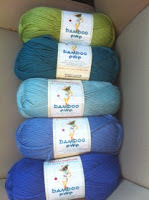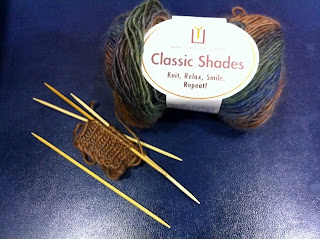So I was thinking about things that annoy me. For example:
- Cobwebs.
- Little white fluffy dogs.
- Wasting things.
- Taxes.
- Putting recyclables in the landfill.
- Rude people.
- Smelly garbage. I
hate putting anything in the bin under the sink that will stink, like onion peels and coffee grounds.
- Opinionated blowhards like Rush and Hillary.
Turns out that composting takes care of the smelly garbage and helps with the putting recyclables in the landfill issue. Oh yeah, and wasting things.
We always had a compost pile when I was young. Actually, our trash was divided as follows: Food scraps from produce, (what we called "garbage") went to the compost, food scraps like meat and bones went to the dog (this was back before dogs knew chicken bones might hurt them), uneaten food off plates... oh yeah, there wasn't any. :) Sour milk got flushed, paper scraps went into the "wastebasket" which when full was used as a fire starter in our wood-burning furnace, tin cans and glass were what we referred to as "trash" and were collected in a bucket in the garage and that ended up going to the dump. I can't really remember that we had that much plastic - I think the wrap type of plastic got burned with the paper and the odd bottles went to the dump - Ha! the very stuff that can be recycled now. Hmmm... But, it goes to show how little trash one ends up with when not relying on pre-packaged foods. So the "garbage" was collected in a container, and at times when there was no official compost pile, Mom would hand over a bowl of scraps and tell one of us to "go throw this over the fence," meaning the fence in back of our house that separated the backyard from the corn field.
When Rich and I got married, we lived in his house which had a "reverse" floor plan, that is, the front door was at the top level which was even with the street. This is where the kitchen, living room, dining area, master bedroom and bathroom were. Downstairs were three bedrooms and a bath. And that second level down was still one whole story from the ground on the other side of the house. Now, our only lawn was two little strips of grass up by the street, one on each side of the garage. The rest was a rather steep slope that had ivy growing on it, and towards the bottom of the slope and beyond the house, was brush and trees. Imagine my delight when I realized that the rail of the deck off the dining area (three stories from the ground below) made an excellent "fence" to toss compost-able scraps over! They just fell into the brush and deteriorated. Although it turns out all items do not decompose at the same rate. One summer when Rich was down there with the weed-eater, he encountered a bunch of watermelon rinds and corncobs. Oops! Those were supposed to land in the ferns...
In case anyone is wondering, I did not go make a proper compost pile down there at our old house because I actually went down into the bottom yard as little as possible. There was poison oak growing down there. A lot of poison oak. And I was very allergic to it. But that actually will be the topic of another entry sometime.
When we bought the empty lot across the road and up the hill a bit and started planning to build a new house, I was quite excited about having land all around that was the same level as the house. This meant I could plant things right into the ground instead of in containers on the deck, and we could have a dog, and I could have a compost pile!
"There's no room for a compost pile," Rich told me when I brought up the subject.
What?? How can that be? We have land all around our house! Well, okay, so it's not a large lot and the patio on one side goes all the way to the property line, at the back of the house there's about six feet (maybe 10, how do people eyeball these things?!) to a retaining wall that marks the property line at the back. Then the other side - well the driveway is actually on an easement over the neighbor's side, but sheesh, there's all this woods and brush and it's
really far to the next houses over there... (not our land Rich reminded me). So that leaves the front which actually goes all the way down to the street but that neighbor's driveway bisects it since they have an easement. Oh the joys of living on a hill. It's cool though, the view is fab!
One day at the library, I picked up a book called "Lasagna Gardening for Small Spaces" by Patricia Lanza. (I thought it was going to be about growing things used in Italian cooking.) Not quite. It described a method of gardening that requires no digging or anything hard from the sound of it. Just layers of stuff like newspapers, leaves, compost, and such.

So while I was a little disappointed it wasn't about Italian cooking, I did learn a few tips. One of which is that
anyone can have a compost pile! Really! Anyone! Even people living in an apartment. Okay... So, I followed this advice and bought an 18-gallon Sterlite plastic tote with lid, and drilled quarter inch holes in the bottom (important for drainage). I did this using
my cordless drill with this thing called a "paddle bit." (Is anyone besides me impressed I know about this?!) I have to admit, I got a teeny bit jealous and decided I wanted my own tools when my friend Kathy helped me install our closet systems when our house was new and we moved in without anything in the closets to hang stuff on and she brought her own tools. Which are pink. And totally suit her because she really is a girly-girl, much more than I could ever hope to be. She's really tiny and cute and has gorgeous jewelry... and her own tile saw. And knows how to use it! So when Harbor Freight Tools had a sale on cordless drills, I got one, only mine is orange. It's the one that was on sale. :) I also got my own toolbox and over time collected my own tools. Not that Rich doesn't have tools. He does. Only they're never around when I need them. They end up at his shop, or in the pickup of one of his workers, or anywhere other than where I can find them. My tools say SUZ on them so there is no question.
Oh yes, the compost bin!

The really cool thing is, you throw in all your produce scraps and bada bing, bada boom, you get really rich loamy compost. If you want it to happen more quickly, it's helpful to add water or other liquid (I'm thinking leftover coffee here) and chop things like watermelon rinds into smaller pieces, add a little soil, and to stir it once in a while with a sturdy stick like maybe a broken broom handle. If you don't want to, no big deal, it just won't decompose as fast.
As I kept adding "stuff" to the first bin, I was thinking I would need to get a second bin any day. The weird thing was, as full as the bin was one day, by the next it would be way emptier. Things just shrunk. I put all my produce waste in for the whole summer - and I'm talking corn husks and cobs, watermelon and muskmelon rinds, orange, lemon, beet, and carrot peels, egg shells, you name it. It was a lot of stuff! And it wouldn't get full! After a winter of continuing to add to the bin, I decided at the beginning of the next summer to go ahead and begin a second one. Mostly so that the first one could go ahead and get finished once I quit adding to it.
For anyone who tries this at home: be sure not to add any animal products like meat, bones, or cheese and other dairy products. Eggs and eggshells are okay. But the other bits will cause a stench you will not like. Think mainly plant based waste.
Now I should probably consider growing more stuff so I have a place to use the compost...







































